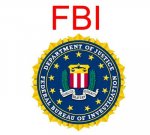Blane
1
The distributed denial of service attacks against 13 of the Internet's core servers has been traced to computers in the U.S. and Korea, according to statements made by U.S. Federal Bureau of Investigation director Robert Mueller.
The FBI director, who made the statements while speaking at a conference in Falls Church, Virginia, would not elaborate on what information his agency has obtained, saying that the investigation was ongoing.
"I can't give you a brief on where the investigation has led us," Mueller said, according to a transcript of his comments provided by the FBI.
The attack, which began on October 21, flooded all 13 of the root servers of the Internet Domain Name System, a network of computer servers that communicate by matching up Internet domains used by people with numeric equivalents used by computers.
All 13 of the root servers were flooded with Internet traffic using ICMP (Internet Control Message Protocol) at more than 10 times the normal rate of traffic, said Brian O'Shaughnessy, a spokesperson at VeriSign after the DDOS attack happened. VeriSign manages the "A" and "J" root servers
Roughly two thirds of those servers were temporarily disabled or severely hampered in serving legitimate user requests by the attack, according to O'Shaugnessy and others. However, four or five of the 13 servers remained online throughout the attack and the majority of Internet users did not experience any interruption in service.
The FBI director, who made the statements while speaking at a conference in Falls Church, Virginia, would not elaborate on what information his agency has obtained, saying that the investigation was ongoing.
"I can't give you a brief on where the investigation has led us," Mueller said, according to a transcript of his comments provided by the FBI.
The attack, which began on October 21, flooded all 13 of the root servers of the Internet Domain Name System, a network of computer servers that communicate by matching up Internet domains used by people with numeric equivalents used by computers.
All 13 of the root servers were flooded with Internet traffic using ICMP (Internet Control Message Protocol) at more than 10 times the normal rate of traffic, said Brian O'Shaughnessy, a spokesperson at VeriSign after the DDOS attack happened. VeriSign manages the "A" and "J" root servers
Roughly two thirds of those servers were temporarily disabled or severely hampered in serving legitimate user requests by the attack, according to O'Shaugnessy and others. However, four or five of the 13 servers remained online throughout the attack and the majority of Internet users did not experience any interruption in service.

